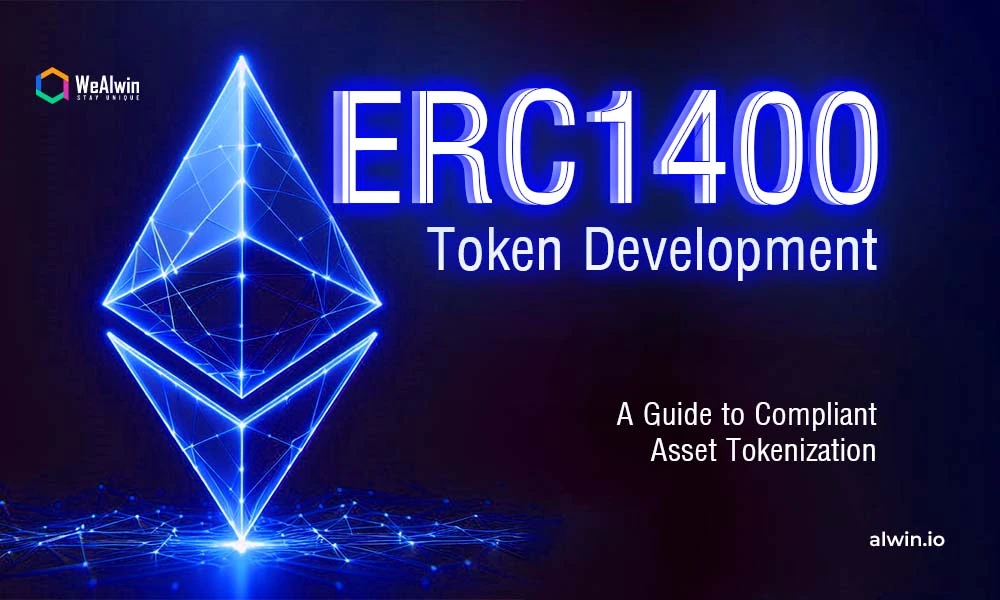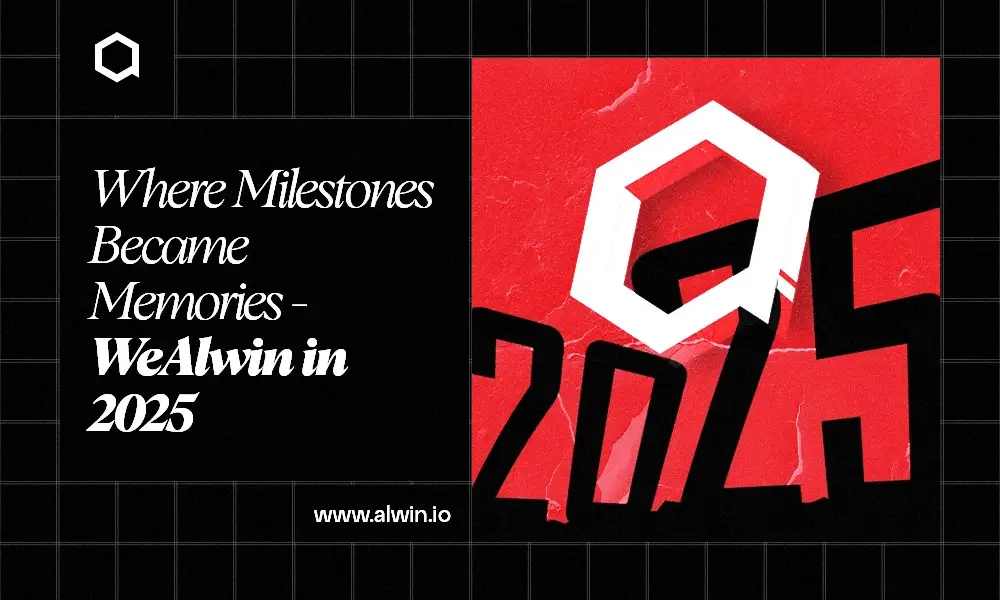As the demand for secure and compliant financial instruments grows, ERC1400 tokens have emerged as a revolutionary solution for businesses and investors in the blockchain ecosystem. This innovative token standard, built on the Ethereum blockchain, combines the flexibility of traditional cryptocurrencies with the regulatory compliance necessary for security tokens.
Adopting ERC1400 token development opens new avenues for fundraising, enabling access to a broader pool of investors and innovative capital-raising strategies.
We explore the intricacies of ERC1400 token development, you will discover how this standard is poised to transform asset ownership and investment strategies, making it a crucial consideration for anyone looking to leverage the power of blockchain technology.
Understanding ERC1400 Token Standard
The ERC1400 token standard stands out as a pivotal innovation, particularly in the realm of security tokens. This standard not only enhances the functionality of tokens but also ensures that they meet the rigorous demands of regulatory compliance.
Definition and Purpose of ERC1400
ERC1400 is a token standard on the Ethereum blockchain specifically designed for security tokens. Its primary purpose is to provide a framework that enables the creation, management, and transfer of security tokens while ensuring compliance with regulatory requirements. Unlike traditional cryptocurrencies, ERC1400 tokens have features that facilitate adherence to laws governing financial instruments, making them ideal for representing ownership in assets such as real estate, equity, and other regulated investments.
Comparison with Other Token Standards
To fully appreciate the advantages of ERC1400, it's essential to compare it with other popular token standards:
ERC20: This is the most widely used token standard, primarily for fungible tokens. While ERC20 tokens are great for creating cryptocurrencies and utility tokens, they lack the compliance features necessary for security tokens. This makes them unsuitable for regulated financial instruments.
ERC721: Known for implementing non-fungible tokens (NFTs), ERC721 allows for unique asset representation. However, similar to ERC20, it does not incorporate the compliance mechanisms that ERC1400 offers, making it less ideal for security applications.
ERC1400: By combining the best aspects of ERC20 and ERC721, ERC1400 introduces a robust framework that supports both fungible and non-fungible tokens while embedding essential compliance features. This versatility positions ERC1400 as the go-to standard for security token offerings (STOs).
Key Features of ERC1400
ERC1400 is distinguished by several key features that enhance its utility and compliance:
1. Composability
Definition: Composability refers to the ability of tokens to interact with other tokens and smart contracts seamlessly.
Benefit: This feature allows developers to build complex financial products and services that can leverage ERC1400 tokens, enhancing their functionality and integration within the broader blockchain ecosystem.
2. Compliance Features
Definition: ERC1400 tokens are designed with built-in compliance mechanisms that ensure adherence to regulatory requirements.
Benefit: Features such as KYC (Know Your Customer) and AML (Anti-Money Laundering) checks can be integrated directly into the token’s functionality, allowing businesses to manage compliance efficiently and transparently.
3. Interoperability
Definition: Interoperability allows ERC1400 tokens to interact with various platforms and systems across the blockchain ecosystem.
Benefit: This ensures that security tokens can be traded on multiple exchanges and platforms, increasing their liquidity and market reach.
4. Granular Control
Definition: Granular control refers to the ability to define specific rules and permissions for token holders.
Benefit: Businesses can customize the rights and restrictions associated with their tokens, such as transferability and voting rights, providing a tailored approach to asset management.
Benefits of ERC1400 Token Development
Enhanced Security Measures for Token Holders
Security is paramount in the world of digital assets, and ERC1400 tokens are built with this in mind.
Robust Safeguards: The ERC1400 standard includes mechanisms that enhance the security of token transactions. Features such as forced transfers and transaction validation help prevent fraud and unauthorized access.
Investor Confidence: By prioritizing security, businesses can instill greater confidence in their investors, encouraging participation in token offerings and fostering long-term relationships.
Increased Liquidity for Security Tokens
Liquidity is a key factor in the attractiveness of any investment, and ERC1400 tokens excel in this area.
Facilitated Trading: By enabling the trading of security tokens on multiple exchanges and platforms, ERC1400 significantly enhances liquidity. This means that investors can buy and sell tokens more easily, making them a more appealing investment option.
Market Access: Increased liquidity opens up access to a broader market, allowing businesses to attract a diverse range of investors and potentially increasing the overall value of their tokenized assets.
Customization Options for Different Business Needs
One size does not fit all in the world of business, and ERC1400 tokens offer the flexibility to customize.
Tailored Solutions: Businesses can define specific rules and permissions for their tokens, such as transfer restrictions and voting rights, allowing for a tailored approach to asset management.
Adaptability: This customization ensures that ERC1400 tokens can meet the unique needs of various industries, from real estate to finance, making them a versatile choice for tokenization.
Cost Reduction Through Streamlined Processes
Cost efficiency is critical for any business, and ERC1400 token development can help achieve this.
Reduced Intermediaries: By leveraging blockchain technology, businesses can minimize the need for intermediaries in transactions, leading to lower operational costs.
Streamlined Operations: The automated processes associated with ERC1400 tokens can significantly reduce the time and resources required for token issuance and management, allowing businesses to focus on growth and innovation.
How to Use the ERC1400 Standard for Compliant Blockchain Securities
The ERC1400 token standard provides a comprehensive framework for creating compliant security tokens on the blockchain. Here's an overview of the tokenization process and the steps involved in creating an ERC1400 token:
Overview of the Tokenization Process
Tokenization is the process of converting real-world assets into digital tokens that can be traded on a blockchain. When using the ERC1400 standard, this process involves defining the token's characteristics, developing the necessary smart contracts, and deploying the tokens on the Ethereum network while ensuring compliance with relevant regulations.
Steps to Create an ERC1400 Token
Creating an ERC1400 token involves several key steps that ensure compliance with regulatory standards while leveraging the benefits of blockchain technology. Here’s a concise guide to the token development process:
1. Define the Token Specifications
Before diving into development, clearly outline the specifications of your ERC1400 token:
Token Name: Choose a unique name for your token.
Symbol: Create a symbol that represents your token (e.g., "STK").
Total Supply: Determine the total number of tokens to be issued.
Compliance Features: Identify the regulatory requirements your token must meet, such as KYC (Know Your Customer) and AML (Anti-Money Laundering) protocols.
2. Develop the Smart Contract
The smart contract is the backbone of your ERC1400 token. Follow these steps:
Choose a Development Framework: Use frameworks like Truffle or Hardhat for smart contract development.
Write the Smart Contract: Implement the ERC1400 standard by coding the necessary functions, including:
- Transfer Functions: Define how tokens will be transferred between users.
- Compliance Features: Integrate features for forced transfers and document management to ensure regulatory compliance.
Testing: Thoroughly test the smart contract on a test network (e.g., Rinkeby or Ropsten) to identify and fix any issues.
3. Deploy the Smart Contract
Once the smart contract is developed and tested:
Deploy to Ethereum Mainnet: Use tools like Remix or Truffle to deploy your ERC1400 token to the Ethereum mainnet. This step requires paying gas fees, so ensure you have sufficient ETH in your wallet.
4. Integrate with a Platform
After deployment, integrate your ERC1400 token with a suitable platform:
Token Management Platforms: Utilize platforms like Polymath or Bitbond that support ERC1400 tokens. These platforms provide tools for managing compliance and facilitating trading.
5. Define and Use Your Contract
Once your token is integrated into a platform:
Define Token Characteristics: Specify any additional features or rules for your token, such as transfer restrictions or voting rights.
Utilize the Token: Begin using your ERC1400 token for its intended purpose, whether for fundraising, asset management, or trading.
Importance of Obtaining Regulatory Approval
Obtaining regulatory approval, such as from the U.S. Securities and Exchange Commission (SEC), is crucial when creating security tokens. The ERC1400 standard helps facilitate this process by incorporating compliance features into the token's structure, but it is still necessary to navigate the legal landscape and ensure adherence to relevant securities laws.
The process of obtaining regulatory approval typically involves:
Understanding SEC Regulations: Familiarize yourself with the applicable securities laws and guidelines that govern the issuance and trading of security tokens.
Preparing the Necessary Documentation: Gather all the required information and documentation, such as the token's whitepaper, legal opinions, and financial statements.
Filing with the SEC: Submit the necessary forms and documentation to the SEC for review and approval.
Awaiting Approval: The SEC will review the filing and may request additional information or clarification before approving.
Receiving Approval: Once the SEC approves the filing, you can proceed with the public offering of your security tokens.
Real-World Applications of ERC1400 Tokens
The ERC1400 token standard has gained traction as a versatile solution for tokenizing various asset classes, particularly in industries that require regulatory compliance. Here are some key use cases, successful implementations, and the potential for innovation in asset management.
Use Cases in Various Industries
Real Estate
Fractional Ownership: ERC1400 allows for the tokenization of real estate assets, enabling fractional ownership. This means multiple investors can own a share of a property, lowering the barrier to entry for real estate investment.
Efficient Transactions: By utilizing smart contracts, ERC1400 streamlines the buying, selling, and management of real estate assets, reducing the need for intermediaries and enhancing transaction speed.
Finance
Publicly Traded Equities and Bonds: ERC1400 can be used to issue and trade shares or bonds on the blockchain, providing a more liquid and efficient market. The standard's compliance features help ensure that these financial instruments meet regulatory requirements.
Private Placements: Companies can issue tokens representing equity or debt, facilitating capital raising while maintaining compliance with securities laws.
Commodities
Tokenized Assets: ERC1400 enables the creation of tokens backed by physical commodities such as gold, oil, or metals. This allows for easier trading and ownership verification, reducing the complexities associated with traditional commodity markets.
E-Money and Stablecoins
Digital Currency Solutions: The ERC1400 standard supports the development of tokens backed by fiat currencies or stablecoins, enabling faster transactions and lower costs in payment systems and remittance services.
Loyalty Programs
Tokenized Rewards: Businesses can create loyalty programs using ERC1400 tokens, allowing customers to earn and redeem tokens securely and transparently.
Examples of Successful ERC1400 Token Implementations
Polymath: As a pioneer in security token standards, Polymath has successfully implemented ERC1400 to facilitate the issuance and management of security tokens. Their platform enables businesses to tokenize a wide array of assets while ensuring compliance with regulatory frameworks.
TokenSoft: This company uses ERC1400 to help clients launch compliant security token offerings (STOs), providing a streamlined process for token issuance and management.
Real Estate Tokenization Platforms: Various platforms have emerged that utilize ERC1400 for real estate tokenization, allowing for fractional ownership and efficient management of property assets.
Potential for Innovation in Asset Management
The ERC1400 standard is not just about compliance; it opens the door for innovative applications in asset management.
Improved Transparency: With features like document management and forced transfers, ERC1400 enhances transparency and auditability in asset transactions, allowing stakeholders to track ownership and compliance easily.
Integration with DeFi: As decentralized finance (DeFi) continues to grow, ERC1400 tokens can be integrated into DeFi platforms, enabling new financial products and services that leverage the benefits of tokenized assets.
Challenges in ERC1400 Token Development
While ERC1400 tokens offer many benefits, their development has challenges. Here are the key problems and solutions:
Technical Issues
Bugs in smart contracts can cause financial losses. Hire experienced developers and test thoroughly. Integrating with existing platforms is complex. Use modular architecture for easier updates.
Regulatory Hurdles
Compliance rules vary by region. Work with legal experts to navigate requirements. Securing regulatory approval takes time. Prepare documentation and engage with regulators early.
Security and Compliance
Monitoring for compliance and security threats is crucial after launch. Implement automated compliance checks. Update security regularly. Investors must understand the token's features. Provide clear documentation and resources.
Conclusion
In conclusion, ERC1400 token development is vital for businesses aiming to succeed in security token offerings. This standard ensures regulatory compliance while enhancing security, liquidity, and customization for tokenized assets.
We encourage businesses to explore ERC1400 for their tokenization needs. If you're considering developing an ERC1400 token, WeAlwin Technologies, a trusted Ethereum Token Development Company, can help. Our expert team will guide you through the process, ensuring compliance and efficiency. Contact us today to learn how we can support your tokenization journey!



